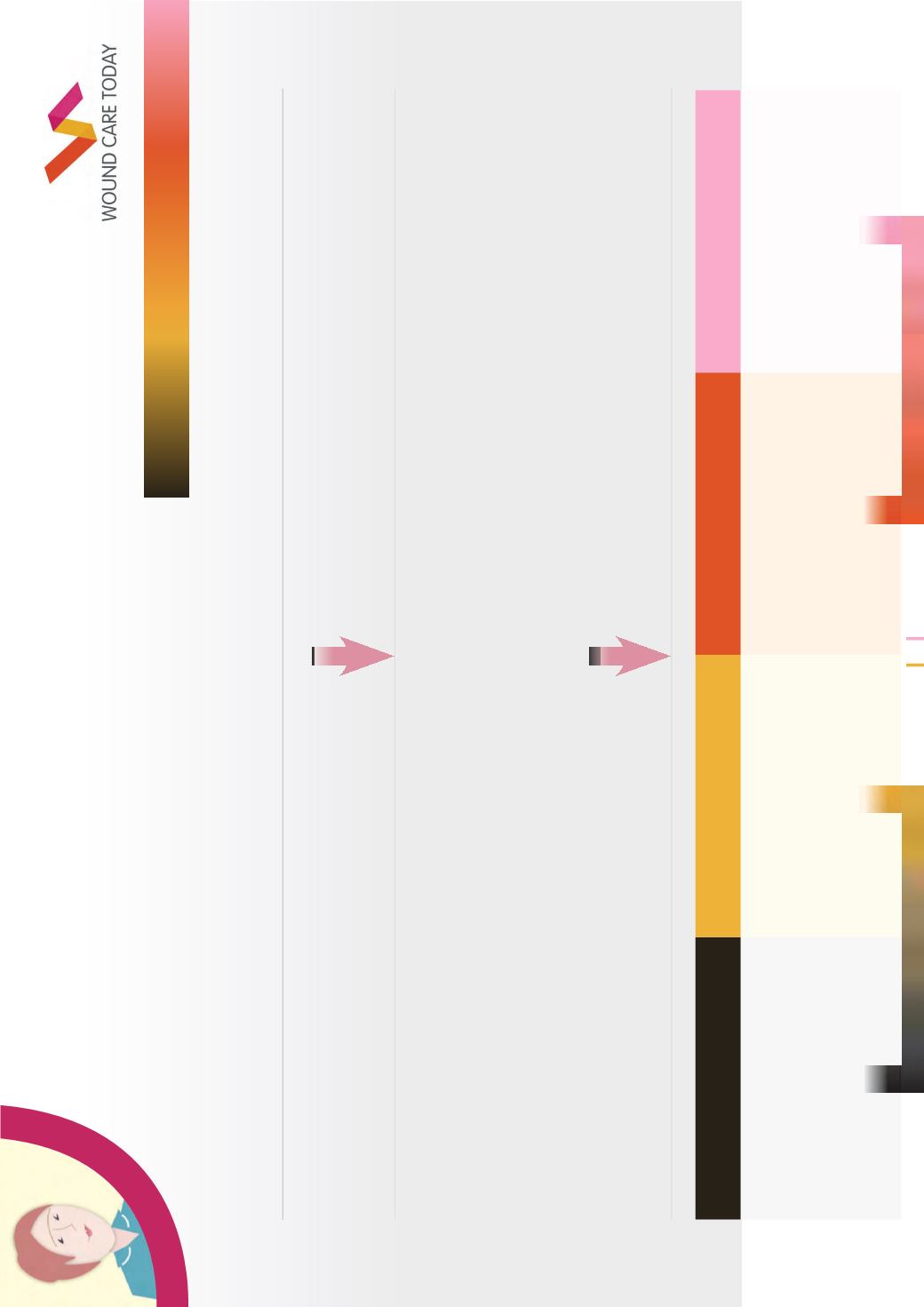
Desloughing wounds
C
l
i
n
i
c
a
l
c
o
m
p
a
n
i
o
n
4
Determine and record tissue type present
Wound assessment
›
To understand if desloughing is appropriate, first cleanse and comprehensively assess the wound to evaluate:
•
Its cause
•
Location and size
•
Tissue type present (i.e. condition of the wound bed)
•
Condition of the surrounding skin
•
Infection
•
Exudate.
›
The patient’s health and preferences should also be considered before desloughing a wound
2
.
Why deslough wounds?
›
Desloughing wounds helps to prepare the wound bed for healing and minimises the risk of infection by removing any debris, slough
and/or necrotic tissue
1
.
Black
Yellow
Red
Pink
Indicates necrotic tissue and
eschar (dry, devitalised tissue).
Unless removed, this will
delay healing
Indicates fibrous, sloughy tissue
that sticks to the wound bed and
cannot be washed away. Together
with exudate, slough provides an
ideal environment for bacteria
to grow
Indicates healthy moist tissue,
made up of new blood vessels
and dermal cells (granulation
tissue), a sign that healing
is occurring
Indicates that tissue is in
the final stage of healing
(epithelialisation)


